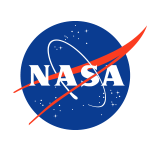Center Independent Research & Development: GSFC IRAD
Hardware-Accelerated Wavefront Sensing and Control
Project Description
The proposal develops a portable digital-signal-processing board that enables a new optical- system architecture for space-telescope systems, while leveraging pre-existing NASA wavefront-sensing (WFS) technology.
This approach provides near real-time correction of system misalignments and disturbances, allowing diffraction-limited imaging performance with reduced mass, power, and hardware requirements, compared to conventional architectures using analog sensors or ground-based control loops. Image-based WFS requires a greater number of floating- point operations per unit-time, increasing overall system latency. Our solution to this latency is an on-board, radiation-hard, computing architecture.
More »Primary U.S. Work Locations and Key Partners
| Organizations Performing Work | Role | Type | Location |
|---|---|---|---|
 Goddard Space Flight Center
(GSFC)
Goddard Space Flight Center
(GSFC)
|
Lead Organization | NASA Center | Greenbelt, Maryland |
Primary U.S. Work Locations
-
Maryland

Suggest an Edit
Recommend changes and additions to this project record.

